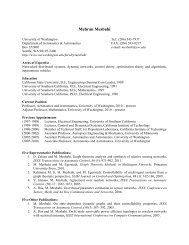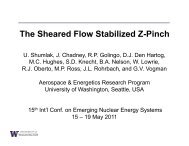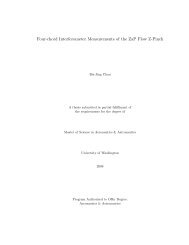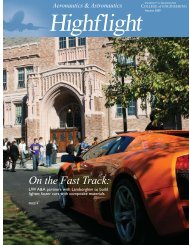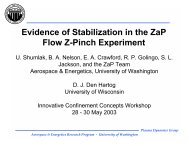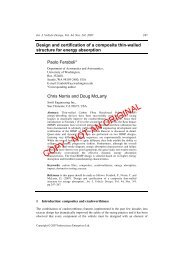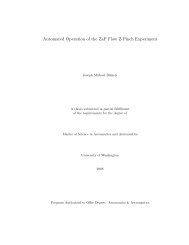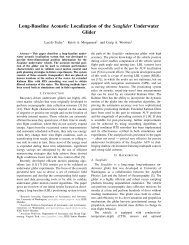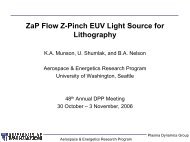Distributed Reactive Collision Avoidance - University of Washington
Distributed Reactive Collision Avoidance - University of Washington
Distributed Reactive Collision Avoidance - University of Washington
Create successful ePaper yourself
Turn your PDF publications into a flip-book with our unique Google optimized e-Paper software.
28<br />
Theorem 1. Let there be a set <strong>of</strong> vehicles, D, which are not in conflict with each other.<br />
When another vehicle, i, is in conflict with some or all members <strong>of</strong> D and performs the<br />
constant-speed maneuver, the system will be conflict-free in time t, where<br />
t ≤ π ‖v i‖<br />
u i,max<br />
, (4.6)<br />
and no vehicles will collide during the maneuver. The vehicles are all modeled by a planar<br />
version <strong>of</strong> (2.1), have speed constraints ‖v j ‖ ≤ v j,max and vehicle i has the input constraint<br />
‖u i ‖ ≤ u i,max . It is assumed that a feasible solution to the optimization problem, v ′ i, exists<br />
and that the vehicles in D maintain a conflict-free state with v ′ i, using a cone with width<br />
defined by (4.3) and (4.4).<br />
Pro<strong>of</strong>. If a feasible point exists for the optimization problem, then the optimal solution is<br />
guaranteed to be found and this point will satisfy<br />
( )<br />
|∠ṽ ′ dsep + δ<br />
− ∠˜r| ≥ arcsin<br />
. (4.7)<br />
‖˜r‖<br />
The maximum amount <strong>of</strong> time required for vehicle i to get from its initial v i to v ′ i is t =<br />
π ‖v i ‖ /u i,max , and during this time ∆˜r ≤ δ from Lemma 2. Therefore, once the desired<br />
velocities have been attained, one still has<br />
|∠ṽ ′ − ∠(˜r + ∆˜r)| ≥ arcsin<br />
( )<br />
dsep<br />
, (4.8)<br />
‖˜r‖<br />
meaning the vehicles are not in conflict. The vehicles cannot collide during this time because<br />
as stated earlier, the pairs must be initially separated by at least ‖˜r‖ ≥ d sep + δ,<br />
which means after the maneuver, they still must be outside <strong>of</strong> collision because ‖˜r + ∆˜r‖ ≥<br />
d sep .<br />
Of course, all <strong>of</strong> this is for naught if a feasible solution does not exist for the optimization.<br />
The following theorem gives a conditional bound, χ i (D), on initial separation that is<br />
sufficient to guarantee the existence <strong>of</strong> a solution.



